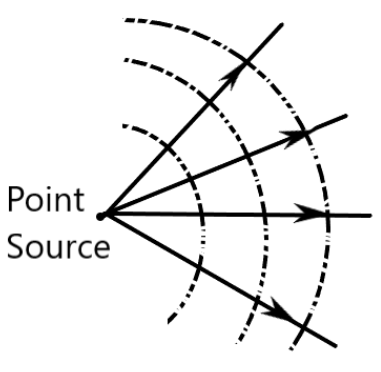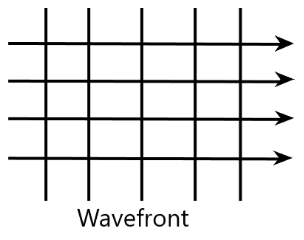Physics Class 12 Chapter 10 Questions and Answers - Free PDF Download



FAQs on NCERT Solutions For Class 12 Physics Chapter 10 Wave Optics - 2025-26
1. How do NCERT Solutions for Class 12 Physics Chapter 10 guide students in answering numerical problems related to wave optics as per the CBSE 2025–26 syllabus?
NCERT Solutions for Class 12 Physics Chapter 10 provide step-by-step calculations for numerical problems, starting with the correct formula, substituting given values, performing unit conversions, and presenting each intermediate step clearly. This approach helps students match the CBSE marking scheme and develop accuracy in presenting answers, as expected in the 2025–26 board exams.
2. What is the correct method to determine the wavelength of light in a Young’s Double Slit Experiment when the distances between fringes and slits are known?
To calculate the wavelength of light in Young’s Double Slit Experiment, use the formula:
- λ = (u × d) / (n × D)
- where u: distance between central bright fringe and nth bright fringe, d: distance between slits, n: fringe number, D: distance from slits to screen.
3. Why is it important to distinguish between interference and diffraction while solving Class 12 Physics Wave Optics questions?
Understanding the difference between interference and diffraction is crucial because interference involves the superposition of waves from two or more sources, creating bright and dark fringes with predictable spacing. Diffraction, on the other hand, deals with the bending and spreading of waves around obstacles or through slits, resulting in central and side maxima. Distinguishing these ensures you apply the correct formula and logic in NCERT-based problems and avoid common CBSE exam errors.
4. How is the concept of polarization explained and assessed in the NCERT Solutions for Wave Optics for Class 12?
NCERT Solutions for Chapter 10 define polarization as the restriction of light vibrations to a single plane. The explanations use theory-based questions and real-life examples, such as the working of polarized sunglasses or cameras, helping students understand practical applications and answer exam questions with clarity and accuracy.
5. What steps should students follow to avoid common mistakes when solving wave optics problems using NCERT Solutions?
Students should:
- Carefully identify the type of problem—interference or diffraction
- Apply the correct path and phase difference formulas
- Show every calculation step
- Maintain correct unit conversions and significant figures
- Reference conditions for constructive and destructive interference
6. How do NCERT Solutions integrate updates from the CBSE 2025–26 deleted syllabus for Wave Optics?
NCERT Solutions for Chapter 10 in the 2025–26 session include only the syllabus topics currently prescribed by CBSE. Questions or solutions based on removed topics, such as the Doppler Effect or extended derivations, are excluded, ensuring all solutions are strictly syllabus-aligned and exam-focused.
7. What is the significance of Huygens’ Principle in solving questions from the Wave Optics chapter using NCERT Solutions?
Huygens’ Principle is fundamental in explaining the propagation of waves, the formation of wavefronts, and predicting phenomena like reflection and refraction. NCERT Solutions use this principle to provide explanatory answers and derivations, helping students build a strong foundation for both theoretical and application-based questions in the Class 12 Physics exam.
8. How is the resolving power of optical instruments described in the NCERT Solutions for Wave Optics?
The resolving power is explained as the ability of an optical system, such as a microscope or telescope, to distinctly separate two close objects. NCERT Solutions discuss key factors affecting resolving power, including wavelength and aperture size, and explain the physical and mathematical interpretation as per CBSE guidelines.
9. How do NCERT Solutions help students develop higher order thinking for HOTS questions from Wave Optics?
NCERT Solutions encourage reasoning beyond direct formulas by presenting why- and what-if scenarios, such as the impact of changing wavelength on interference patterns or comparing results for different media. This trains students to justify each reasoning step and prepares them for conceptual and application-based HOTS questions in the CBSE board exam.
10. In what ways should students structure their answers as per NCERT Solutions to meet the CBSE marking scheme in Wave Optics?
Students should:
- Start with a clear statement of the relevant principle or formula
- Demonstrate stepwise calculations for numericals
- Write concise, logically ordered explanations for conceptual questions
- Highlight assumptions or conditions used
- Conclude with the final answer in correct units or precise terms




























